|
Sicily in Italy and Rhône in France. Two distant lands, mothers of great
wines, both white and red, in two territories where are also produced sweet
wines, although, it should be said, in this sense Sicily has a more significant
production. Nero d'Avola and Syrah are grapes very different one from each
other, of course distant and not only for geographical reasons. Nevertheless
these two grapes have been blended together in many wines, a meeting happened
in Sicily many years ago. The famous red from Sicily, besides being used alone
for the wines of the island, it is frequently blended to other varieties, both
autochthonous and international. One of them is Syrah that, added in variable
quantities, is found in many red wines of Sicily. In the Rhône wine area we
see something different, here Syrah is frequently vinified alone and it is one
of the fundamental grapes of the viticulture in this land.
Two different varieties which are however interesting for our tasting by
contrast, in which we will see the analogies in these grapes are really few.
For certain aspects, Nero d'Avola and Syrah can be considered two complementary
varieties, this can also be explained - besides the historical and opportunity
reasons - by the fact in Sicily these two grapes are blended together in many
wines of the island. In Sicily Nero d'Avola is blended to many
allochtonous varieties, in particular Merlot, Cabernet Sauvignon and
Syrah, as well as other local red berried grapes. As for multi varietal wines,
in its homeland - Rhône - Syrah is part of one of the most famous wines of
this territory: Châteauneuf-du-Pape red. Syrah however plays a
marginal role in this wine, as - it should be said - the main varieties
making it are Grenache Noir and Mourvèdre.
The origins of Nero d'Avola have been for a long time subject of confusion,
mainly because of the many names used to call this grape. The main confusion is
caused by the italianization of its most famous name, calaulisi in
Sicilian dialect, italianized as calabrese, therefore supposing the
origin of the grape from the neighboring Calabria region. Indeed, the name
calaulisi comes from the Sicialian dialectal terms cala and
aulisi. Cala comes from calea, a synonym for
rracina meaing “grape” in Sicilian dialect. Aulisi means
something or someone from Aula, the Sicilian dialectal name for Avola, a
town in the province of Syracuse and also famous for its renowned almonds. The
theory Nero d'Avola originated from the neighboring Calabria seems therefore
unfounded as the meaning of calaulisi would be translated into Italian
as “grape from Avola”.
Nero d'Avola, besides being vinified alone in the entire territory of Sicily,
is also part of the only Denominazione di Origine Controllata e
Garantita of the island: Cerasuolo di Vittoria. In this wine, in fact, Nero
d'Avola makes the dominant part and it is blended to Frappato, another
interesting red berried grape of Sicily. Nero d'Avola has a pretty wide wine
making versatility, capable of giving relatively simple wines as well as
of interesting complexity. Before its wine making revaluation, Nero d'Avola was
mainly used as a variety capable of giving body and color to other wines. Nero
d'Avola can be used both for the vinification in inert containers and in cask
or barrique. Thanks to its good acidity, wines produced with Nero d'Avola, in
particular when they are aged in wood, can evolve in bottle for many years,
while developing an organoleptic profile of interesting complexity.
The origin of Syrah shares, for certain aspects, the same confusion existing
for Nero d'Avola and derived from its name. For a long time it was believed the
red from Rhône originated from the city of Shiraz, in Iran, or from Syracuse,
in Sicily. For a long time it was believed Syrah originated from Shiraz and,
still today, in certain parts of the world this grape is called like the
Iranian city, in particular in Australia. Recent research done on Syrah's DNA,
has finally unfolded the origin of this grape, unequivocally placing its origin
in the Rhône area in France. Today we can assert Syrah originated from two
French varieties: Dureza and Mondeuse Blanche. Specifically, Syrah has been
generated from a vine of Mondeuse Blanche pollinated by Dureza, however this
research could not understand when this event happened in the past.
|
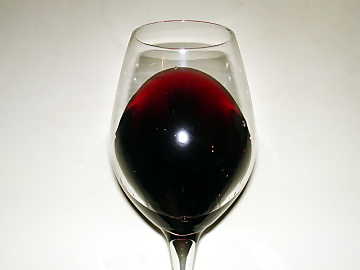 | |
| The color and
transparency of Syrah | |
|
Wines produced with Syrah are particularly famous for two characteristics: the
good body and the evident aromas of black pepper which can be perceived in
certain wines. A fascinating and appreciated organoleptic characteristic,
research done on this grape found out the black pepper aroma in Syrah is caused
by the presence of rotundone. This sesquiterpene is in fact found in
black pepper and, besides being found in other plants as well, it is also
present in wines made with Syrah. The red grape from the Rhône has been very
successful in many countries of the world and today it is considered as an
international variety. Syrah is in fact virtually cultivated in every wine
country of the world, in particular Australia where it is very successful.
Widely spread in the Rhône area, Syrah is the variety used for the production
of two of the most famous wines of this territory: Hermitage and Côte-Rôtie.
Our tasting by contrast will examine Nero d'Avola produced in the territory of
Syracuse - in Sicily, Italy - and a Syrah produced in the Rhône area, in
France. We will choose two wines aged in cask for a short time in order to
ensure the characteristics of wood to not excessively influence the
organoleptic profile of the two wines. In choosing our wines, we will pay
particular attention on their composition. It should in fact be noticed that,
despite in the label we may read the name of just one variety, it can happen
the wine is instead a multi varietal one and in which the grape stated in the
label is just the main one. We will choose wines belonging to the same vintage
and however having not more than three years from harvesting, in order to keep
the right balance between secondary and tertiary aromas. Wines will be tasted
in two tasting glasses and served at a temperature of 18 °C (65 °F).
As usual, we will start our tasting by contrast from the appearance analysis,
the one in which will be evaluated the color and transparency of wine. Let's
pour the two wines in their respective glasses and tilt them over a white
surface. We will start the evaluation of color and transparency from Nero
d'Avola. At the base of the glass we will observe an intense and brilliant ruby
red color, as well as a moderate transparency: in case we put a written text
behind the glass, we can easily read it. Nuances of Nero d'Avola - observed at
the edge towards the opening of the glass - confirms a ruby red color. Let's
now observe the aspect of Syrah. At the base of the glass will be observed an
intense ruby red, almost deep, and transparency is lower than Nero d'Avola,
evidently more concentrated. Nuances of Syrah show a ruby red hue and, pretty
frequently, tending to purple red.
The olfactory profiles of Nero d'Avola and Syrah give the nose of the taster
different aromas. Both varieties make of the sensations recalling black and red
fruits their main aromatic characteristics, although they develop in different
ways and with different aromas. In general terms, Syrah is mainly characterized
by aromas which can be associated to black fruits - in particular black
currant, black cherry and plum - whereas Nero d'Avola expresses both black and
red fruits. Syrah is mainly characterized by dominant aromas of plum and black
currant, whereas in Nero d'Avola will be black cherry and blackberry to mainly
characterize the opening. In both varieties will be recognized the pleasing
flower aroma of violet. Nero d'Avola and Syrah are both suited for the
vinification in cask or barrique, a technique enriching - of course - the
tertiary sensations of wines.
Let's now place the glasses in front of us and keep them in vertical position
without swirling. Let's now proceed with the evaluation of opening aromas of
the two wines, starting from Nero d'Avola. From the glass will be perceived
aromas of black cherry, plum and blackberry, as well as a pleasing aroma of
violet. Let's now pass to the other glass and, without swirling, let's evaluate
the opening aromas of Syrah. To the nose will be perceived a quite different
profile from Nero d'Avola, in this wine it is the black currant to play the
dominant role, to which follow plum and black cherry. Also in Syrah will be
perceived the pleasing aroma of violet. After having swirled the glass, let's
smell Nero d'Avola in which will be perceived blueberry, raspberry and carob.
Moreover, depending on the type of cask used, we will perceive aromas of
tobacco and vanilla. In the profile of Syrah we can appreciate the
characteristic aroma of black pepper, as well as blueberry, blackberry and,
thanks to the aging in wood, vanilla, tobacco and chocolate. It should be
noticed both wines have a refreshing and balsamic hint recalling menthol.
Differences between the two grapes are still evident, and in a clear way, in
the mouth. Let's take a sip of Nero d'Avola and appreciate the attack. In the
mouth we will perceive a sensation of moderate astringency followed by a
pleasing roundness and perceptible crispness. The correspondence to the nose is
good and it will be perceived flavors of black cherry, plum and blackberry.
Let's now pass to the tasting of Syrah. The attack of this wine is
characterized by a stronger sensation of astringency and a lower crispness,
also roundness is lower than Nero d'Avola. In the mouth will be perceived the
flavors of black currant, black cherry and plum. It should also be noticed the
difference in structure of both wines: Syrah has an evidently fuller body than
Nero d'Avola. The impact of alcohol seems to be higher in Nero d'Avola, also
contributing to the sensation of roundness, giving to the mouth a pleasing and
soft taste.
The final part of the tasting is about the ending sensations which can be
perceived in the mouth after having swallowed the wine. In Nero d'Avola can be
appreciated a good persistence, leaving in the mouth flavors recalling
blackberry, black cherry and plum, as well as a pleasing sensation of roundness
and a perceptible crispness. The finish of Syrah is evidently of good
persistence in which can be appreciated flavors of black currant, plum, black
cherry and, in regard to Nero d'Avola, a fuller sensation of structure and
astringency. Differences are perceived also in this phase, as the two wines
leaves in the mouth extremely different sensations, although pleasing in both
cases. Two distinct grapes, even opposite, protagonists of the red wines in
their respective lands and can however go along very well, something widely
proved by the many wines produced in Sicily by blending these two varieties.
|


 Trebbiano Spoletino
Trebbiano Spoletino Intense golden yellow and nuances of golden yellow, very transparent.
Intense golden yellow and nuances of golden yellow, very transparent. Intense, clean, pleasing, refined and elegant, starts with hints of
apple, medlar and citrus fruits followed by aromas of pear, peach,
pineapple, hawthorn, plum, lychee, broom, hazelnut, melon, honey and
mineral.
Intense, clean, pleasing, refined and elegant, starts with hints of
apple, medlar and citrus fruits followed by aromas of pear, peach,
pineapple, hawthorn, plum, lychee, broom, hazelnut, melon, honey and
mineral.
 Crisp attack and however balanced by alcohol, good body, intense
flavors, pleasing roundness.
Crisp attack and however balanced by alcohol, good body, intense
flavors, pleasing roundness.
 Very persistent finish with long flavors of apple, medlar and lychee.
Very persistent finish with long flavors of apple, medlar and lychee. 9 months in steel tanks, 9 months in bottle.
9 months in steel tanks, 9 months in bottle. Pasta and risotto with mushrooms and crustaceans, Sauteed white meat, Stewed fish
Pasta and risotto with mushrooms and crustaceans, Sauteed white meat, Stewed fish
 Sagrantino
Sagrantino Intense ruby red and nuances of garnet red, little transparency.
Intense ruby red and nuances of garnet red, little transparency. Intense, clean, pleasing, refined and elegant, starts with hints of
blackberry, plum and black cherry followed by aromas of violet, blueberry,
vanilla, chocolate, tobacco, leather, graphite, pink pepper and menthol.
Intense, clean, pleasing, refined and elegant, starts with hints of
blackberry, plum and black cherry followed by aromas of violet, blueberry,
vanilla, chocolate, tobacco, leather, graphite, pink pepper and menthol.
 Tannic attack and however balanced by alcohol, full body, intense
flavors, agreeable.
Tannic attack and however balanced by alcohol, full body, intense
flavors, agreeable.
 Very persistent finish with long flavors of blackberry, black cherry
and plum.
Very persistent finish with long flavors of blackberry, black cherry
and plum.
 36 months in cask, 12 months in bottle.
36 months in cask, 12 months in bottle. Game, Roasted meat, Stewed and braised meat, Hard cheese
Game, Roasted meat, Stewed and braised meat, Hard cheese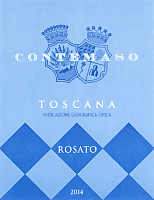
 Sangiovese
Sangiovese Brilliant cherry pink and nuances of cherry pink, moderate transparency.
Brilliant cherry pink and nuances of cherry pink, moderate transparency. Intense, clean, pleasing and refined, starts with hints of cherry,
raspberry and cyclamen followed by aromas of strawberry, blueberry, plum
and peach.
Intense, clean, pleasing and refined, starts with hints of cherry,
raspberry and cyclamen followed by aromas of strawberry, blueberry, plum
and peach.
 Crisp attack and however balanced by alcohol, good body, intense
flavors, agreeable.
Crisp attack and however balanced by alcohol, good body, intense
flavors, agreeable.
 Persistent finish with flavors of cherry, raspberry and strawberry.
Persistent finish with flavors of cherry, raspberry and strawberry. 6 months in steel tanks.
6 months in steel tanks. Stuffed pasta, Risotto with meat, Roasted white meat, Roasted fish, Dairy products
Stuffed pasta, Risotto with meat, Roasted white meat, Roasted fish, Dairy products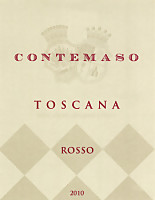
 Sangiovese (60%), Petit Verdot (27%), Cabernet Sauvignon (13%)
Sangiovese (60%), Petit Verdot (27%), Cabernet Sauvignon (13%) Intense ruby red and nuances of garnet red, little transparency.
Intense ruby red and nuances of garnet red, little transparency. Intense, clean, pleasing, refined and elegant, starts with hints of
black cherry, plum and black currant followed by aromas of violet,
blackberry, blueberry, vanilla, tobacco, chocolate, raspberry, iris and
eucalyptus.
Intense, clean, pleasing, refined and elegant, starts with hints of
black cherry, plum and black currant followed by aromas of violet,
blackberry, blueberry, vanilla, tobacco, chocolate, raspberry, iris and
eucalyptus.
 Properly tannic attack and however balanced by alcohol, good body,
intense flavors, agreeable.
Properly tannic attack and however balanced by alcohol, good body,
intense flavors, agreeable.
 Persistent finish with flavors of black cherry, plum and black currant.
Persistent finish with flavors of black cherry, plum and black currant. 15 months in barrique.
15 months in barrique. Roasted meat, Stewed and braised meat, Broiled meat and barbecue, Hard cheese
Roasted meat, Stewed and braised meat, Broiled meat and barbecue, Hard cheese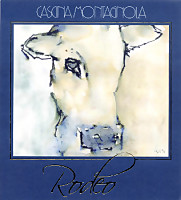
 Barbera
Barbera Intense ruby red and nuances of garnet red, little transparency.
Intense ruby red and nuances of garnet red, little transparency. Intense, clean, pleasing and refined, starts with hints of black
cherry, plum and blueberry followed by aromas of violet, blackberry,
vanilla, cocoa, tobacco, licorice and menthol.
Intense, clean, pleasing and refined, starts with hints of black
cherry, plum and blueberry followed by aromas of violet, blackberry,
vanilla, cocoa, tobacco, licorice and menthol.
 Properly tannic attack and however balanced by alcohol, good body,
intense flavors, pleasing crispness.
Properly tannic attack and however balanced by alcohol, good body,
intense flavors, pleasing crispness.
 Persistent finish with flavors of black cherry, blueberry and plum.
Persistent finish with flavors of black cherry, blueberry and plum. 15 months in barrique, 12 months in bottle.
15 months in barrique, 12 months in bottle. Roasted meat, Stewed and braised meat with mushrooms, Hard cheese
Roasted meat, Stewed and braised meat with mushrooms, Hard cheese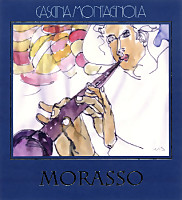
 Timorasso
Timorasso Intense golden yellow and nuances of golden yellow, very transparent.
Intense golden yellow and nuances of golden yellow, very transparent. Intense, clean, pleasing, refined and elegant, starts with hints of
plum, citrus fruits and honey followed by aromas of quince, pear jam, peach
jam, hazelnut, hawthorn, broom, hay, flint and mineral.
Intense, clean, pleasing, refined and elegant, starts with hints of
plum, citrus fruits and honey followed by aromas of quince, pear jam, peach
jam, hazelnut, hawthorn, broom, hay, flint and mineral.
 Crisp attack and however balanced by alcohol, good body, intense
flavors, pleasing roundness.
Crisp attack and however balanced by alcohol, good body, intense
flavors, pleasing roundness.
 Persistent finish with flavors of quince, plum and honey.
Persistent finish with flavors of quince, plum and honey. 12 months in steel tanks, 12 months in bottle.
12 months in steel tanks, 12 months in bottle. Stuffed pasta, Roasted fish, Roasted white meat, Mushroom soups
Stuffed pasta, Roasted fish, Roasted white meat, Mushroom soups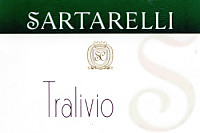
 Verdicchio
Verdicchio Brilliant straw yellow and nuances of straw yellow, very transparent.
Brilliant straw yellow and nuances of straw yellow, very transparent. Intense, clean, pleasing and refined, starts with hints of apple,
hawthorn, citrus fruits followed by aromas of almond, plum, peach, pear,
pineapple, broom and medlar.
Intense, clean, pleasing and refined, starts with hints of apple,
hawthorn, citrus fruits followed by aromas of almond, plum, peach, pear,
pineapple, broom and medlar.
 Crisp attack and however balanced by alcohol, good body, intense
flavors, agreeable.
Crisp attack and however balanced by alcohol, good body, intense
flavors, agreeable.
 Persistent finish with flavors of apple, plum and almond.
Persistent finish with flavors of apple, plum and almond. 6 months in steel tanks, 4 months in bottle.
6 months in steel tanks, 4 months in bottle. Broiled fish, Roasted white meat, Fish soups, Fried fish
Broiled fish, Roasted white meat, Fish soups, Fried fish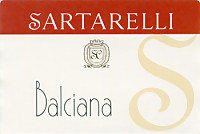
 Verdicchio
Verdicchio Brilliant golden yellow and nuances of golden yellow, very transparent.
Brilliant golden yellow and nuances of golden yellow, very transparent. Intense, clean, pleasing, refined and elegant, starts with hints of
quince, apricot and honey followed by aromas of almond, citrus fruits,
hawthorn, pear, plum, pineapple, chamomile, candied fruits, broom, hazelnut
and mineral.
Intense, clean, pleasing, refined and elegant, starts with hints of
quince, apricot and honey followed by aromas of almond, citrus fruits,
hawthorn, pear, plum, pineapple, chamomile, candied fruits, broom, hazelnut
and mineral.
 Crisp attack and however balanced by alcohol, full body, intense
flavors, pleasing roundness.
Crisp attack and however balanced by alcohol, full body, intense
flavors, pleasing roundness.
 Very persistent finish with long flavors of quince, apricot and honey.
Very persistent finish with long flavors of quince, apricot and honey. 8 months in steel tanks, 6 months in bottle.
8 months in steel tanks, 6 months in bottle. Stuffed pasta with mushrooms, Roasted fish, Roasted white meat, Hard cheese
Stuffed pasta with mushrooms, Roasted fish, Roasted white meat, Hard cheese
 Barbera
Barbera Intense ruby red and nuances of garnet red, little transparency.
Intense ruby red and nuances of garnet red, little transparency. Intense, clean, pleasing, refined and elegant, starts with hints of
cherry, plum and blueberry followed by aromas of violet, blackberry,
tobacco, vanilla, chocolate, cinnamon, mace and menthol.
Intense, clean, pleasing, refined and elegant, starts with hints of
cherry, plum and blueberry followed by aromas of violet, blackberry,
tobacco, vanilla, chocolate, cinnamon, mace and menthol.
 Properly tannic attack and however balanced by alcohol, good body,
intense flavors, pleasing crispness.
Properly tannic attack and however balanced by alcohol, good body,
intense flavors, pleasing crispness.
 Persistent finish with flavors of cherry, plum and blueberry.
Persistent finish with flavors of cherry, plum and blueberry. 18 months in barrique.
18 months in barrique. Stewed and braised meat with mushrooms, Roasted meat, Hard cheese
Stewed and braised meat with mushrooms, Roasted meat, Hard cheese
 Nebbiolo
Nebbiolo Brilliant ruby red and nuances of garnet red, moderate transparency.
Brilliant ruby red and nuances of garnet red, moderate transparency. Intense, clean, pleasing, refined and elegant, starts with hints of
cherry, plum and raspberry followed by aromas of violet, rose, vanilla,
strawberry, blueberry, chocolate, tobacco, leather, cinnamon, mace and
menthol.
Intense, clean, pleasing, refined and elegant, starts with hints of
cherry, plum and raspberry followed by aromas of violet, rose, vanilla,
strawberry, blueberry, chocolate, tobacco, leather, cinnamon, mace and
menthol.
 Tannic attack and however balanced by alcohol, full body, intense
flavors, pleasing crispness.
Tannic attack and however balanced by alcohol, full body, intense
flavors, pleasing crispness.
 Very persistent finish with long flavors of cherry, plum and raspberry.
Very persistent finish with long flavors of cherry, plum and raspberry. 18 months in barrique, 24 months in bottle.
18 months in barrique, 24 months in bottle. Game, Roasted meat, Stewed and braised meat, Hard cheese
Game, Roasted meat, Stewed and braised meat, Hard cheese
